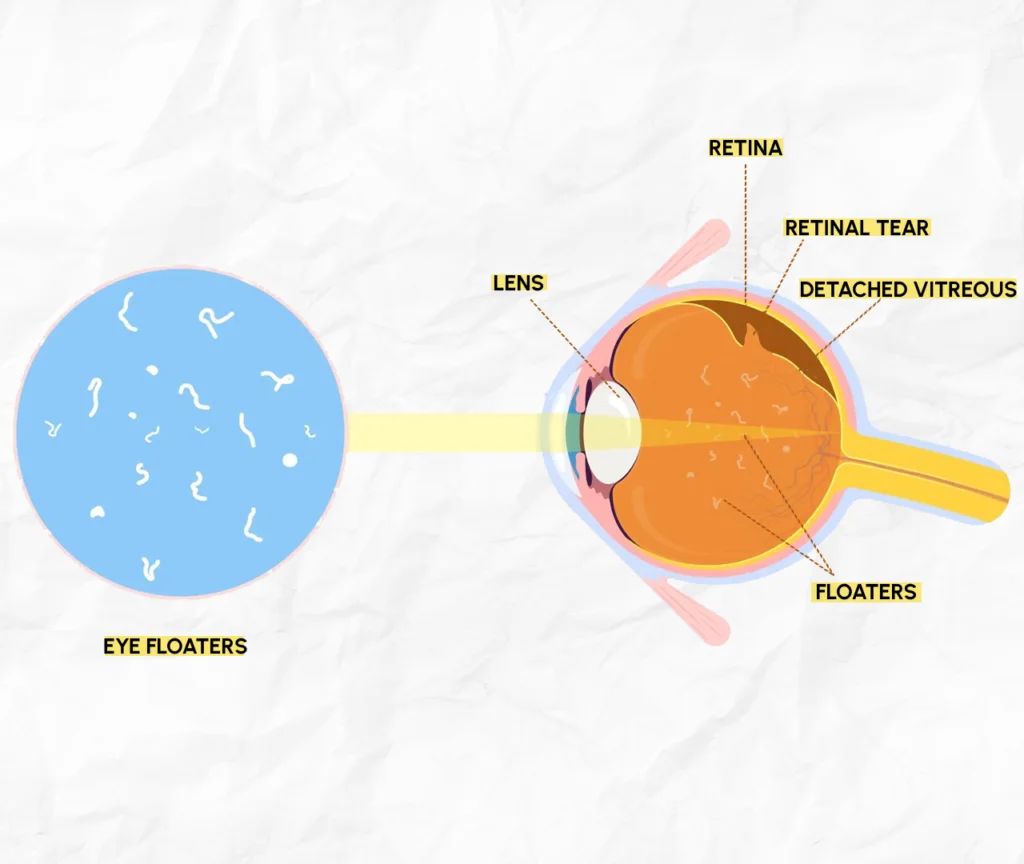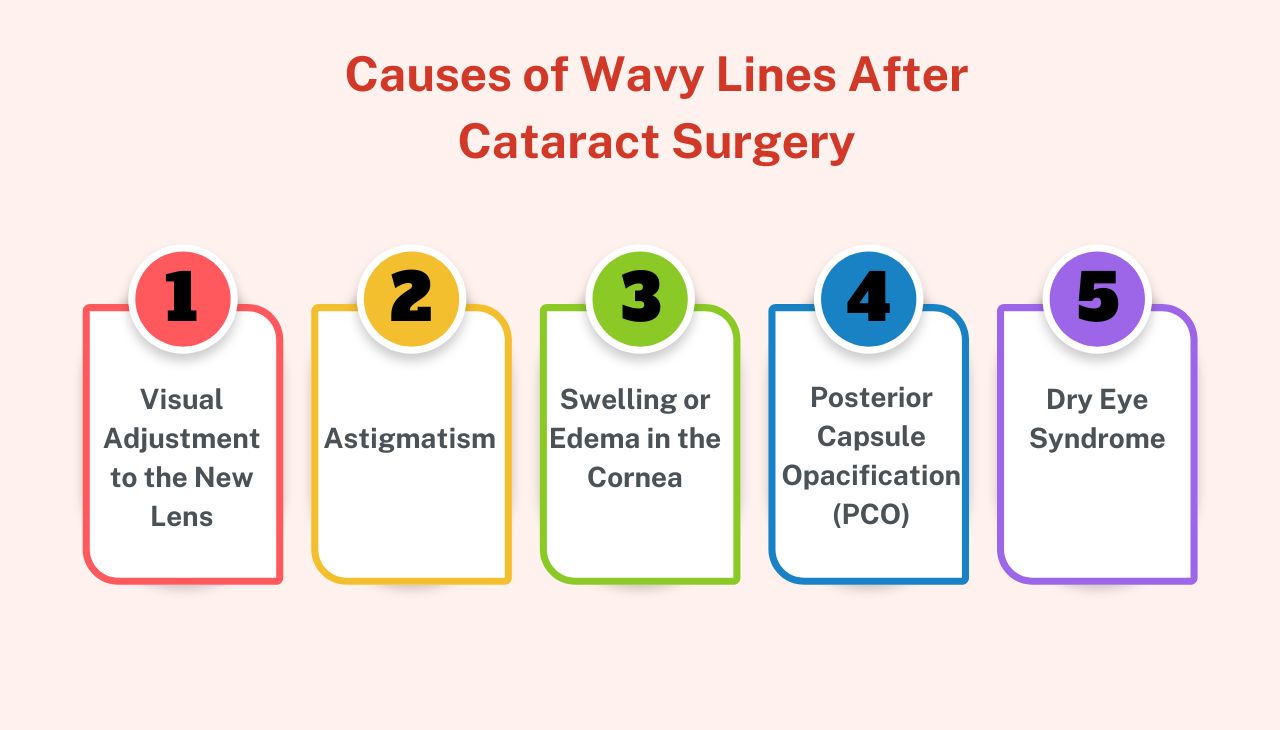After cataract surgery, many patients experience changes in their vision, which can sometimes include seeing wavy or distorted lines. These visual disturbances can raise concerns about the success of the surgery and the health of the eyes. In this blog, we will explore the causes behind these post-surgery symptoms, their implications, and when it might be necessary to seek professional care.
Understanding Post-Cataract Visual Changes

Cataract surgery is one of the most commonly performed procedures in the world and is typically highly successful in restoring vision. However, some patients report experiencing wavy lines or other visual distortions in the days or weeks following surgery. These changes can feel concerning but are often temporary.
The human eye’s lens is responsible for focusing light onto the retina, creating clear images. During cataract surgery, the clouded natural lens is replaced with an artificial intraocular lens (IOL). While the surgery is effective for clearing clouded vision, the healing process can lead to some temporary discomfort and visual disturbances, like wavy lines.
Causes of Wavy Lines After Cataract Surgery

- Visual Adjustment to the New Lens
- After cataract surgery, your brain and eyes need to adjust to the new IOL. This adjustment period can cause temporary visual distortions, including wavy lines. These symptoms usually resolve within a few days to weeks as the brain adapts to the new lens.
- After cataract surgery, your brain and eyes need to adjust to the new IOL. This adjustment period can cause temporary visual distortions, including wavy lines. These symptoms usually resolve within a few days to weeks as the brain adapts to the new lens.
- Astigmatism
- Some patients may experience astigmatism following cataract surgery. Astigmatism causes light to focus unevenly on the retina, leading to blurry or distorted vision. If you notice wavy lines along with blurry vision, this could be a sign of post-surgical astigmatism.
- Some patients may experience astigmatism following cataract surgery. Astigmatism causes light to focus unevenly on the retina, leading to blurry or distorted vision. If you notice wavy lines along with blurry vision, this could be a sign of post-surgical astigmatism.
- Swelling or Edema in the Cornea
- Edema, or swelling of the cornea, can also lead to distorted vision. This is usually a temporary condition that resolves as the eye heals. Swelling can cause the light entering your eye to be scattered, resulting in wavy or blurry vision.
- Edema, or swelling of the cornea, can also lead to distorted vision. This is usually a temporary condition that resolves as the eye heals. Swelling can cause the light entering your eye to be scattered, resulting in wavy or blurry vision.
- Posterior Capsule Opacification (PCO)
- PCO, also known as “secondary cataract,” is a common condition that can develop months or even years after cataract surgery. It occurs when the posterior capsule, which holds the IOL in place, becomes cloudy. PCO can cause blurry or wavy vision and might require a laser treatment known as YAG capsulotomy to correct.
- PCO, also known as “secondary cataract,” is a common condition that can develop months or even years after cataract surgery. It occurs when the posterior capsule, which holds the IOL in place, becomes cloudy. PCO can cause blurry or wavy vision and might require a laser treatment known as YAG capsulotomy to correct.
- Dry Eye Syndrome
- Dry eyes are common after cataract surgery due to changes in the tear film and the eye’s surface. If your eyes feel dry, scratchy, or you see wavy lines, it could be a sign that the surface of your eye is not being lubricated properly. This condition can be managed with lubricating eye drops and other treatments.
- Dry eyes are common after cataract surgery due to changes in the tear film and the eye’s surface. If your eyes feel dry, scratchy, or you see wavy lines, it could be a sign that the surface of your eye is not being lubricated properly. This condition can be managed with lubricating eye drops and other treatments.
When Should You Be Concerned?
While some visual changes are normal after cataract surgery, there are situations where you should seek immediate medical attention:

- Persistent or Increasing Wavy Lines: If the wavy lines do not improve or worsen over time, it may be a sign of a more serious issue like PCO or retinal complications.
- Sudden Vision Loss: Any sudden loss of vision or the appearance of flashes of light, particularly after cataract surgery, should be addressed immediately, as it could indicate a retinal detachment or other severe issue.
- Pain or Redness: While mild discomfort can occur after surgery, severe pain or significant redness should be evaluated by an eye care professional.
The Role of Follow-Up Appointments
After cataract surgery, follow-up appointments with your eye doctor are crucial. These visits help ensure that your eyes are healing properly and that any potential complications are caught early. During these appointments, your doctor will assess your vision, check the IOL’s positioning, and monitor for conditions like PCO or signs of retinal problems.
Laxmi Eye Hospital, a leading eye care provider in Mumbai with over 30 years of expertise, specializes in advanced treatments for retinal diseases, including retinal detachment. The hospital is known for its team of highly skilled ophthalmologists and state-of-the-art technology. It offers comprehensive care across specialties such as Cataract, LASIK (Bladeless LASIK, ICL, IPCL, Contoura Vision LASIK), Glaucoma, Diabetic Eye Care, Corneal Diseases, Retina Treatment, and Pediatric Ophthalmology. With its focus on delivering optimal outcomes from diagnosis to post-surgery recovery, Laxmi Eye Hospital ensures top-quality eye care across its locations in Dombivli, Kharghar, Panvel, and Kamothe, Navi Mumbai.
To schedule an appointment, you can visit the Laxmi Eye Hospital website or call the clinic directly.
FAQs
1. Is it normal to see wavy lines after cataract surgery?
Yes, mild visual disturbances, including wavy lines, are common after cataract surgery. These should improve as your eyes heal, typically within a few days to weeks.
2. How long do visual changes last after cataract surgery?
In most cases, any post-surgery visual disturbances, including wavy lines, resolve within a few weeks. If symptoms persist, contact your eye doctor.
3. Can astigmatism cause wavy lines after cataract surgery?
Yes, astigmatism can develop after cataract surgery and may cause wavy or distorted lines. Your eye doctor can assess if corrective treatment is needed.
4. What is posterior capsule opacification (PCO)?
PCO, also called a secondary cataract, is a common condition that can occur months or years after cataract surgery, causing blurry or wavy vision. It can be treated with a simple laser procedure.
5. When should I call my doctor after cataract surgery?
If you experience sudden vision loss, severe pain, or significant changes in your vision, contact your eye doctor immediately.
Conclusion
If you’re noticing wavy lines after cataract surgery, don’t panic—it’s often a normal part of the healing process. However, it’s important to stay vigilant and seek medical advice if the symptoms don’t improve or if you experience other concerning signs. Regular follow-ups with your eye doctor will help ensure your eyes are healing as expected and that any potential complications are addressed promptly. At Laxmi Eye Hospital, our expert team is dedicated to providing the best care to ensure your eye health and comfort.




